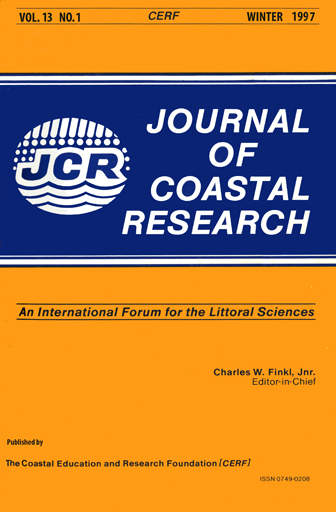Upper Pleistocene Rocky Shores and Intertidal Biotas at Playa La Palmita (Baja California Sur, Mexico)
Keywords:
Last interglacial epoch, oxygen isotope substage 5e, encrusting biotas, bivalve populations, coralline red algaeAbstract
Four examples of Upper Pleistocene, rocky shores and associated biotas arc preserved in ecological detail at Playa La Palmita in Bahia Santa Ines on the Gulf of California (Baja California Sur, Mexico), A 2 m-high sea cliff eroded from Miocene andesite reaches 6.25 m above present sea level and retains lfi species of encrusting organisms. Dominant space occupiers are the bivalves Pseudochama janus, Oetrea fischeri, O. palmula, Arca pacifica, Cardita affinis, and Chama mexicana together with coralline red algae. Carbonate sediments burying the sea cliff include rhodoliths, 15 additional species of free-dwelling bivalves and 15 species of gastropods, most of which are intertidal to shallow subtidal in habit. At the top of the sea cliff is a hydrothermal deposit of dolomite, which formed a broad abrasion platform extensively bored by a bivalve species attributed to Thracia curta.
An andesite shoal 2,600 m in area occurs at a slightly higher elevation 7.75 m above present sea level and preserves zoned populations of Glans affinis and Periglypta multicostata (bivalves), as well as vermetid "worm-shell" colonies. A flat andesite island 12,500 m in area with an elevation of 11 m is completely surrounded but not covered by carbonates. Nestled among boulders in the Ice of the paleo-island are bivalve populations of Chione californiensis, P. multicostata and Codakia distinguenda. Based on previous studies employing U-series analyses at Playa Palmita and nearby Mulege, these features can be correlated to oxygen isotope substage 5e, that is, developed about 125,000 years ago as a facies of the Mulege Formation.


